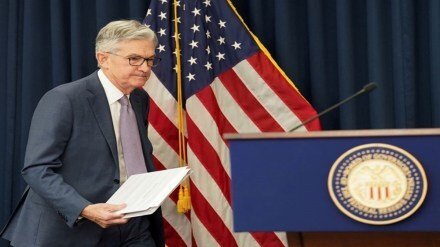US Fed Rate Hike Highlights: Global investors are in for a pivotal week. A key measure of inflation, the US CPI data was released on December 12 and the Federal Reserve’s interest-rate decision was announced on Wednesday, December 13. Both these key events are expected to set the tone for the global stock market and economies in 2024.
The US CPI data for November was made available by the US Bureau of Labor Statistics on Tuesday. The FOMC two-day meeting is happening on December 12-13 and the US Fed announced the rate hike decision on December 13.
Inflation has slowed significantly since reaching a 40-year high of 9.1% in June 2022 as a result of COVID-related product shortages and surges in consumer demand. However, at 3.2% (October Data), it remains well above the Fed’s 2% target.
The Fed raised its key interest rate from near zero early last year to a 22-year high of 5.25% to 5.5% (As of today) to help contain rising prices. However, Fed officials have held off on raising interest rates since July, and with inflation and the labor market both cooling, most economists believe the central bank is done raising rates.
Tuesday’s opening of European equities markets was expected to be higher as investors got ready for this week’s key central banks’ interest rate decisions as well as the most recent US inflation data.
Later this week, the European Central Bank, and the Bank of England, among others, are expected to make decisions about monetary policy and direct the trajectory of interest rates for the markets.
Additionally, today’s investors will evaluate Germany’s ZEW indicator of economic expectations for December.
On Monday, the U.S. stock market witnessed an extraordinary event that has captured the interest of Wall Street investors.
The Dow Jones Industrial Average DJIA closed at its highest level in almost two years, while all three of the major U.S. equity indexes reached new 52-week highs.
However, none of the “Magnificent 7” players closed in green. Rather, they were all heavily negative, except for Microsoft Corp. MSFT, -0.78%, all of the megacap technology stocks finishing at least 1% lower.
The annual rate of inflation in the United States decreased from 3.7% in September to 3.2% in October 2023. The US Core Inflation Rate was the biggest surprise last month. In October 2023, the US annual core consumer price inflation rate—which does not include volatile goods like food and energy—dropped from 4.1% in the previous month to 4%, a two-year low.
November’s CPI is expected to be at 3.1%, the lowest since June. However, the core reading, which the Fed closely monitors, is expected to rise 0.3% from October, up from a 0.2% increase in the previous month, and to remain at 4% year on year.
The United States’ consumer price inflation rate has significantly decreased, from a high of 9.1% year over year in June 2022 to a low of 3% in June 2023. After a strong summer for consumer spending, this slowed in August and September before the annual rate recovered to 3.7% due to growing energy costs and resilience in some of the core (ex-food and energy) components.
The CPI measures how quickly US inflation is changing over time. The prices that consumers pay for goods and services across the entire U.S. economy serve as the basis for this important economic indicator. The inflation rate is the percentage change in the CPI over a given time.
Through 2024, inflation is predicted to continue declining, and Wall Street is placing bets that the Fed will begin lowering interest rates by the middle of the year. This might boost corporate profits even further, which influences stock prices. Usually, a company’s stock value is based on how much profit it makes and how much investors are willing to pay for every $1 of that profit. Since investors tend to look forward, stocks probably already account for projected increases in earnings in 2024.
When interest rates drop, expensive technology stocks also seem more appealing to investors.
Markets, meanwhile, are on a roll. November saw a surge in stocks to their highest level of the year as investors increased their bets that the Fed would stop raising interest rates to combat inflation. Rising interest rates have caused the economy to cool.
S&P 500 has registered nearly 20% gain in 2023, while the tech-heavy Nasdaq 100 has gained nearly 47%. With an 8% increase last month, the S&P 500 had one of its greatest November gains in the previous 100 years.
In 2023, inflation began to loosen its hold on Wall Street and the economy, igniting expectations for a more accommodative Federal Reserve and strong market gains in 2024.
Hello and welcome to our live coverage on US CPI data announcement. Will inflation further cool down remains to be seen. Stay with us as we bring you all the key numbers and what it means for the markets.
